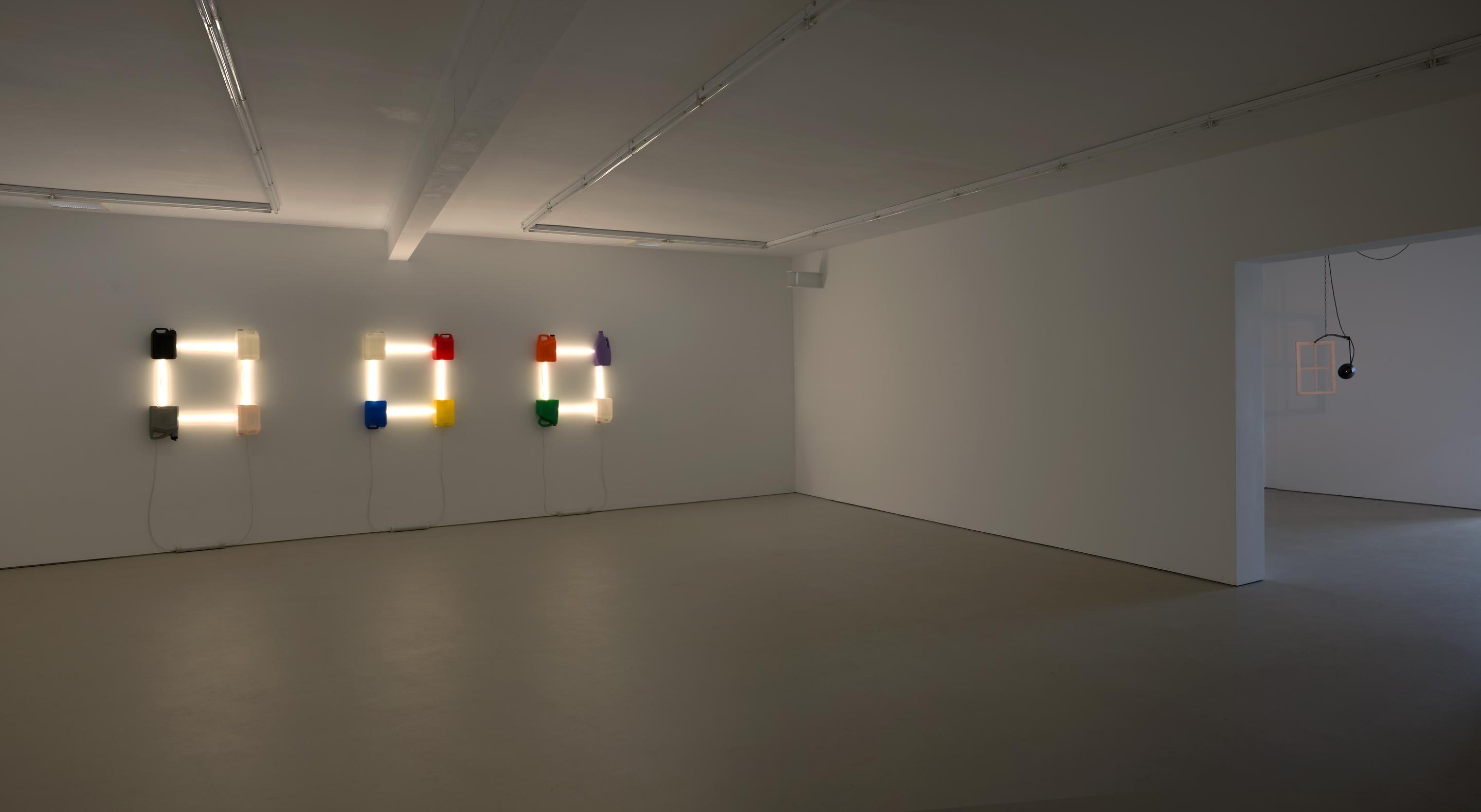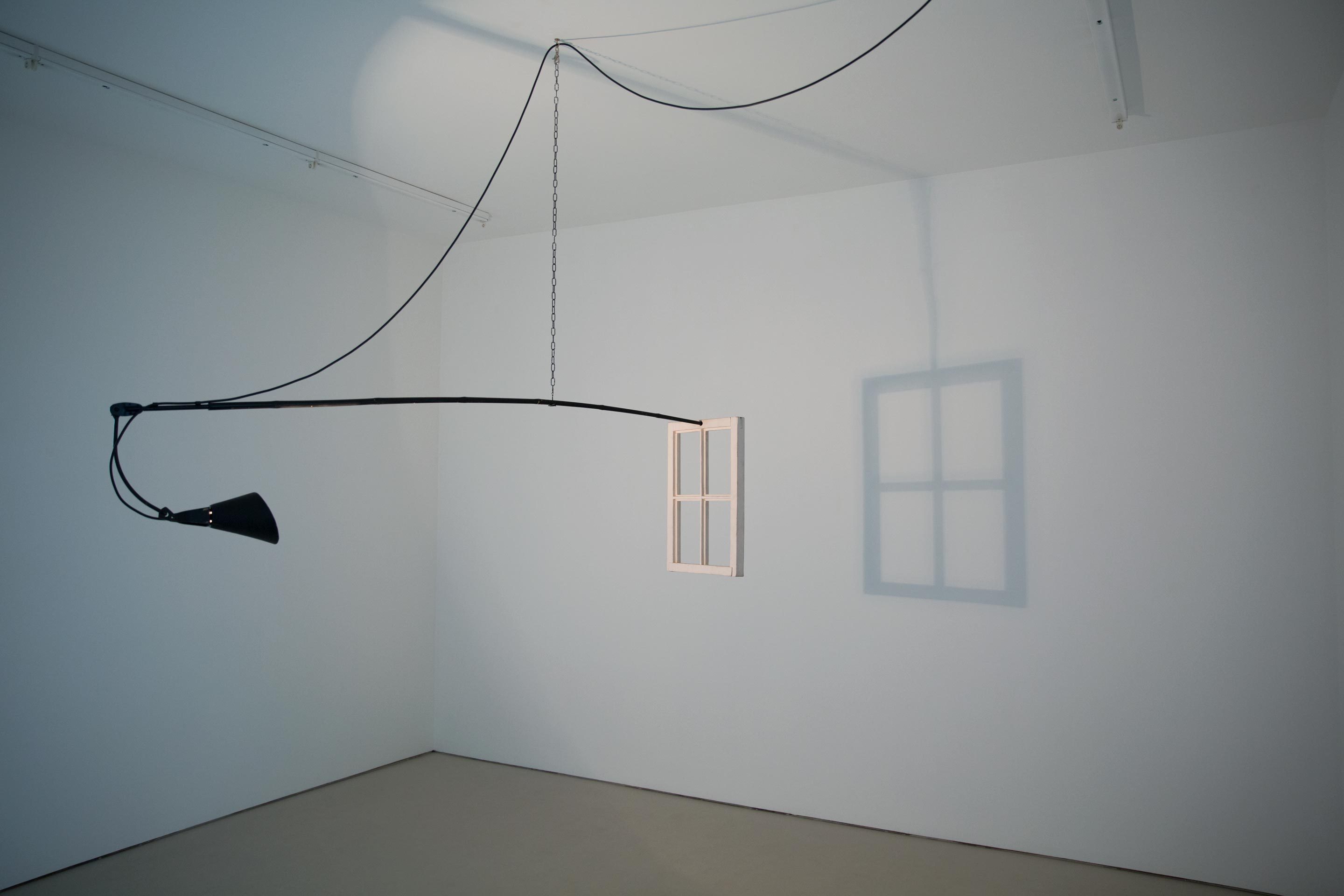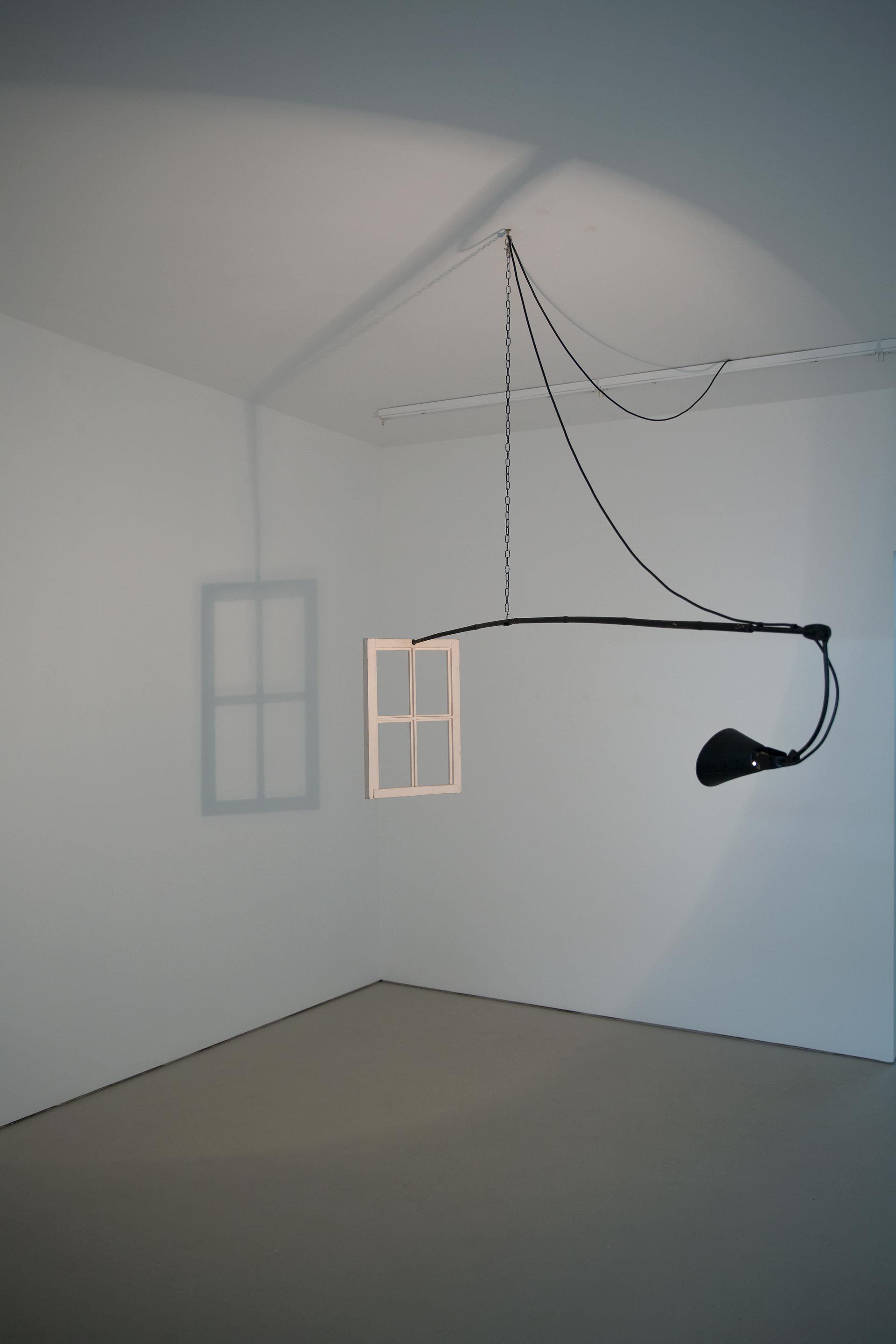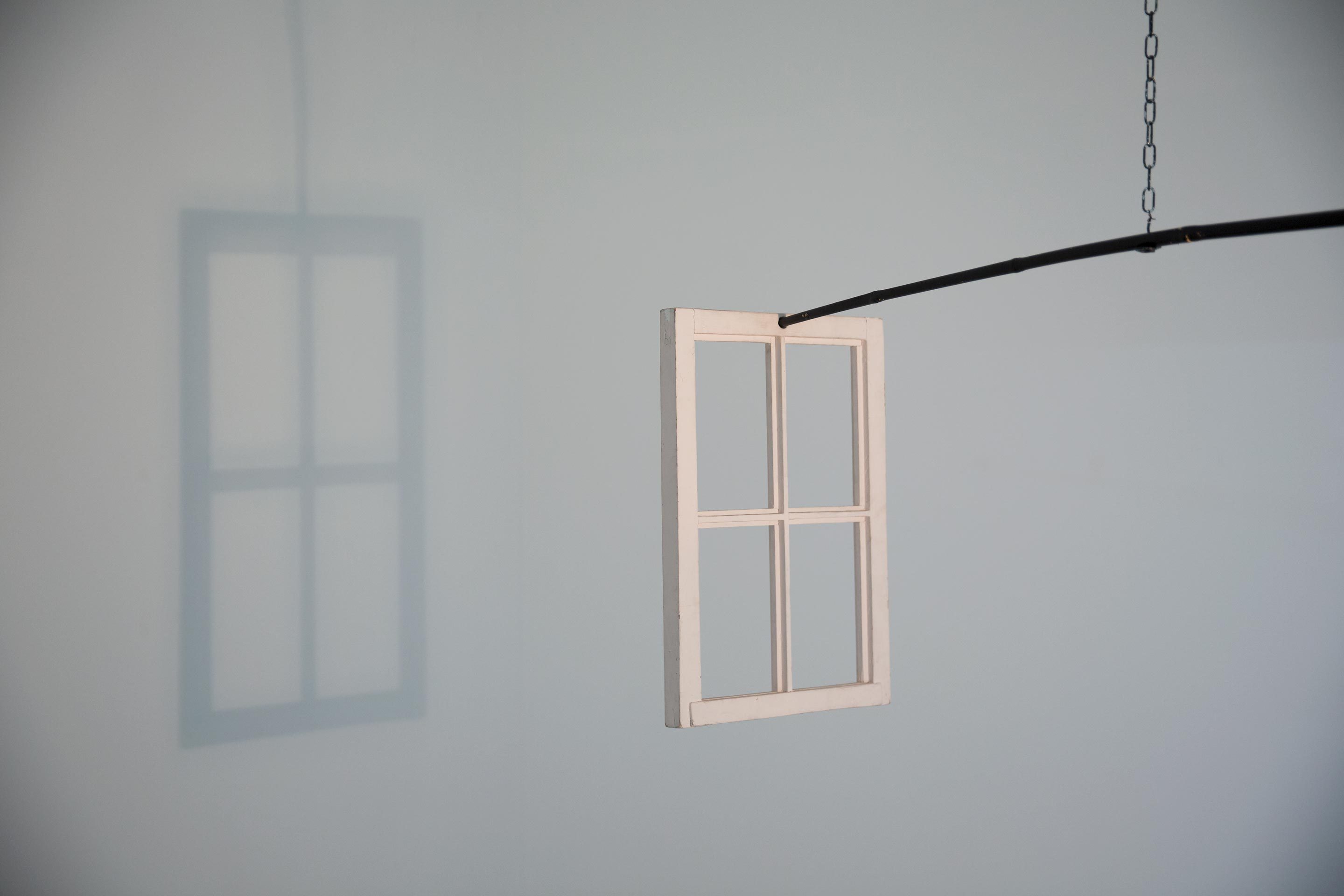Bill Culbert Colour Theory, Window Mobile

Bill Culbert
Colour Theory, Window Mobile, 2018
installation view: Hopkinson Mossman, Auckland

Bill Culbert
Colour Theory, 1991-2018
plastic bottles, fluorescent tubes, fittings
three elements, each 1200 x 1050mm approx.

Bill Culbert
Window Mobile, 1985
bamboo, reading lamp, window, chain, fittings
600 x 2000 x 380mm approx. overall

Bill Culbert
Window Mobile, 1985
bamboo, reading lamp, window, chain, fittings
600 x 2000 x 380mm approx. overall

Bill Culbert
Window Mobile (detail), 1985
bamboo, reading lamp, window, chain, fittings
600 x 2000 x 380mm approx. overall

Bill Culbert
Window Mobile (detail), 1985
bamboo, reading lamp, window, chain, fittings
600 x 2000 x 380mm approx. overall
Bill Culbert
Colour Theory, Window Mobile
2 March – 29 March 2018
Light is; and it lights. It can be both object and the means by which objects are perceived. It is immaterial, yet capable of constructing three-dimensional space. It can exist at and as a source, and can project, becoming a beam, an impact, a mode of image transmission, a vessel. Its causal effects are, potentially, many: it can cast shadows, pierce opacities, make reflections and refractions… Light also sustains large metaphorical and allegorical associations, spilling easily into the language of illumination and transcendence, brilliance and obscurity, dawns that ‘herald’ and sunsets as melancholy prefacers of closure or death. Culbert utterly repudiates this metaphorical seductiveness: his scepticism generates the work’s critical iridescence, the sense that our perception is being watched and measured.*
Hopkinson Mossman is pleased to present Colour Theory, Window Mobile, a solo exhibition by Bill Culbert. As the title suggest, Culbert’s new exhibition comprises two major works: in the small gallery a set of three frames composed of fluorescent tubes and plastic bottles, titled Colour Theory (1991-2015), and in the large gallery, Window Mobile, a single suspended sculpture from 1985.
Both works in the new show mark critical moments in Culbert’s long-standing engagement with the phenomenal qualities of his immediate environment. Colour Theory, a series of fluorescent tube frames with different coloured plastic bottles at each corner, proposes, in both form and title, a sequential logic. With Culbert’s characteristic penetrating attention to the properties of objects, Colour Theory asks us to consider containment and perforation, visibility and transparence, inside and outside, and perhaps most crucially the perception of light and colour. As Ian Wedde notes of light: ‘Its agency can make colour appear; it is, inherently, all colours (or none).’
Window Mobile – an early assemblage using electric light –combines a white window frame with a black reading lamp: the dark shadow of the pale window frame projects on the wall as it gently spins in space. The work appears in the tradition of the Camera Obscura or Claude glass, as a device transmit an image, however, like many of Culbert’s works, it serves not to ‘explain’ nor to harness shadows and light, rather to make mischief:
Each of these works was singular: an explanation; an answer to a trick question… Collectively, they constitute a sustained critique of conventional explanations involving perspective, the frame, light sources, points-of-view. And they enlist an extended definition of the photograph, that effect of windowed light, in their critique.*
Bill Culbert (1935, Port Chalmers) left New Zealand in 1957 to study at the Royal College of Art, London. He now lives and works between London and the South of France. Culbert has had more than 100 solo exhibitions at major institutions in New Zealand, England, Europe, the USA and Australia. In 2013 Culbert was New Zealand’s representative at the 55th Venice Biennale.
* Ian Wedde, Bill Culbert: Making Light Work, AUP, 2009 (p. 9, p.89)